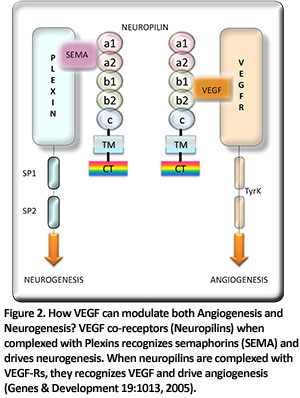


Posted June 18, 2013
Ricardo Saban, D.V.M., Ph.D., University of Oklahoma Health Sciences Center
Investigator-Initiated Research Award
 Interstitial Cystitis/Bladder Pain Syndrome (IC/BPS) is a disabling condition that is characterized by intense pain, increased urinary frequency, and voiding urgency. There are no effective treatments available for IC/BPS, and the cause is unknown. However, endoscopic examination of the urinary bladders of IC/BPS patients reveals pinpoint bleeding (glomerulations), suggesting a link to the body's vascular system. Recently, it was shown that IC/PBS patients with higher numbers of these glomerulations were more likely to have elevated quantities of vascular endothelial growth factor (VEGF) in the blood vessels and cells lining the bladder surface.
Interstitial Cystitis/Bladder Pain Syndrome (IC/BPS) is a disabling condition that is characterized by intense pain, increased urinary frequency, and voiding urgency. There are no effective treatments available for IC/BPS, and the cause is unknown. However, endoscopic examination of the urinary bladders of IC/BPS patients reveals pinpoint bleeding (glomerulations), suggesting a link to the body's vascular system. Recently, it was shown that IC/PBS patients with higher numbers of these glomerulations were more likely to have elevated quantities of vascular endothelial growth factor (VEGF) in the blood vessels and cells lining the bladder surface.
With funding from a fiscal year 2008 Investigator-Initiated Award, Dr. Ricardo Saban sought to test whether this increased level of VEGF modulates nerve plasticity and alters bladder function and pain sensation. He further hypothesized that blocking VEGF or its receptors should limit pain sensation and restore bladder function. Using a novel animal model of chronic bladder inflammation, Dr. Saban and his research team at the University of Oklahoma Health Science Center discovered that inflammation alters the density of peripheral nerves in the bladder, which may explain the increased pain symptoms seen in human patients. The inflammation model also exhibits a higher density of blood and lymphatic vessels and increased expression of VEGF. These findings were mimicked by administration of VEGF, which resulted in increased nerve density, inflammation, bladder overactivity, and visceral sensitivity. This outcome supports Dr. Saban's hypothesis that increased VEGF expression is associated with the pain symptoms described by IC/BPS patients. Moreover, animals with induced chronic inflammation that were treated with anti-VEGF antibodies displayed reduced bladder inflammation and nerve density. The availability of FDA-approved anti-VEGF antibodies such as Avastin® that are currently used to treat other human diseases means that, thanks to Dr. Saban's research, the first therapeutic to treat IC/BPS is closer than ever.
Dr. Saban plans to examine whether VEGF levels in urine are elevated in IC/BPS patients and how VEGF levels correlate with symptom scores, paving the way for future clinical trials testing the efficacy of FDA-approved VEGF antibodies in IC/BPS patients.

Selected Publications:
Malykhina AP, Lei Q, Erickson CS, Epstein ML, Saban MR, Davis CA, Saban R. 2012. VEGF induces sensory and motor peripheral plasticity, alters bladder function, and promotes visceral sensitivity. BMC Physiol 12:15.
Saban MR, Davis CA, Avelino A, Cruz F, Maier J, Bjorling DE, Sferra TJ, Hurst RE, Saban R. 2011. VEGF signaling mediates bladder neuroplasticity and inflammation in response to BCG. BMC Physiol 11:16.
Saban MR, Sferra TJ, Davis CA, Simpson C, Allen A, Maier J, Fowler B, Knowlton N, Birder L, Wu XR, Saban R. 2010. Neuropilin-VEGF signaling pathway acts as a key modulator of vascular, lymphatic, and inflammatory cell responses of the bladder to intravesical BCG treatment. Am J Physiol Renal Physiol 299(6):F1245-1256.
Links:














